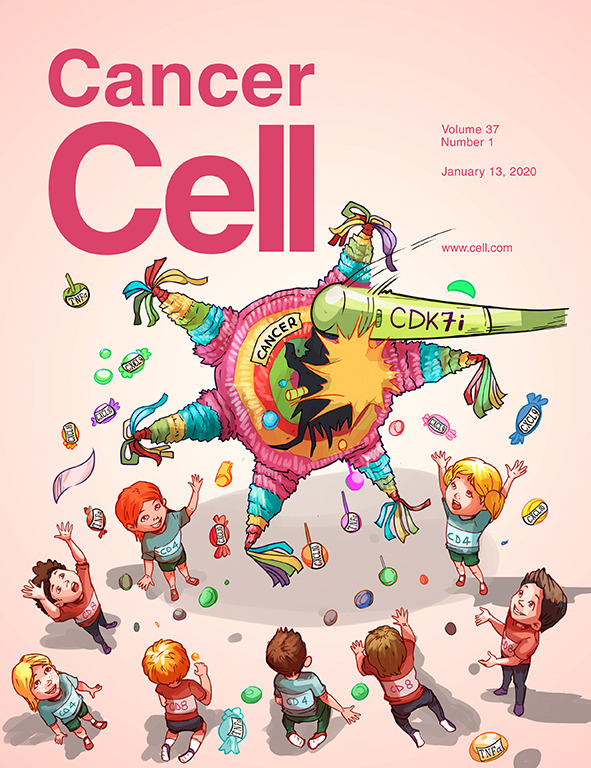髓母细胞瘤亚组初探
IF 48.8
1区 医学
Q1 CELL BIOLOGY
引用次数: 0
摘要
最近,四个原发性髓母细胞瘤亚组被纳入《世界卫生组织中枢神经系统肿瘤分类》,这就要求采用全球通用的方法来识别亚组。在本期《癌细胞》(Cancer Cell)杂志上,Wang 等人开发了一种快速可靠的机器学习工作流程,利用常规磁共振成像进行术前亚组确定。本文章由计算机程序翻译,如有差异,请以英文原文为准。
Medulloblastoma subgrouping at first sight
Recent incorporation of the four primary medulloblastoma subgroups into the WHO Classification of Central Nervous System Tumors necessitates globally accessible methods to discern subgroups. In this issue of Cancer Cell, Wang et al. develop a rapid and reliable machine learning workflow for pre-operative subgroup determination using routine magnetic resonance imaging.
求助全文
通过发布文献求助,成功后即可免费获取论文全文。
去求助
来源期刊

Cancer Cell
医学-肿瘤学
CiteScore
55.20
自引率
1.20%
发文量
179
审稿时长
4-8 weeks
期刊介绍:
Cancer Cell is a journal that focuses on promoting major advances in cancer research and oncology. The primary criteria for considering manuscripts are as follows:
Major advances: Manuscripts should provide significant advancements in answering important questions related to naturally occurring cancers.
Translational research: The journal welcomes translational research, which involves the application of basic scientific findings to human health and clinical practice.
Clinical investigations: Cancer Cell is interested in publishing clinical investigations that contribute to establishing new paradigms in the treatment, diagnosis, or prevention of cancers.
Insights into cancer biology: The journal values clinical investigations that provide important insights into cancer biology beyond what has been revealed by preclinical studies.
Mechanism-based proof-of-principle studies: Cancer Cell encourages the publication of mechanism-based proof-of-principle clinical studies, which demonstrate the feasibility of a specific therapeutic approach or diagnostic test.
 求助内容:
求助内容: 应助结果提醒方式:
应助结果提醒方式:


